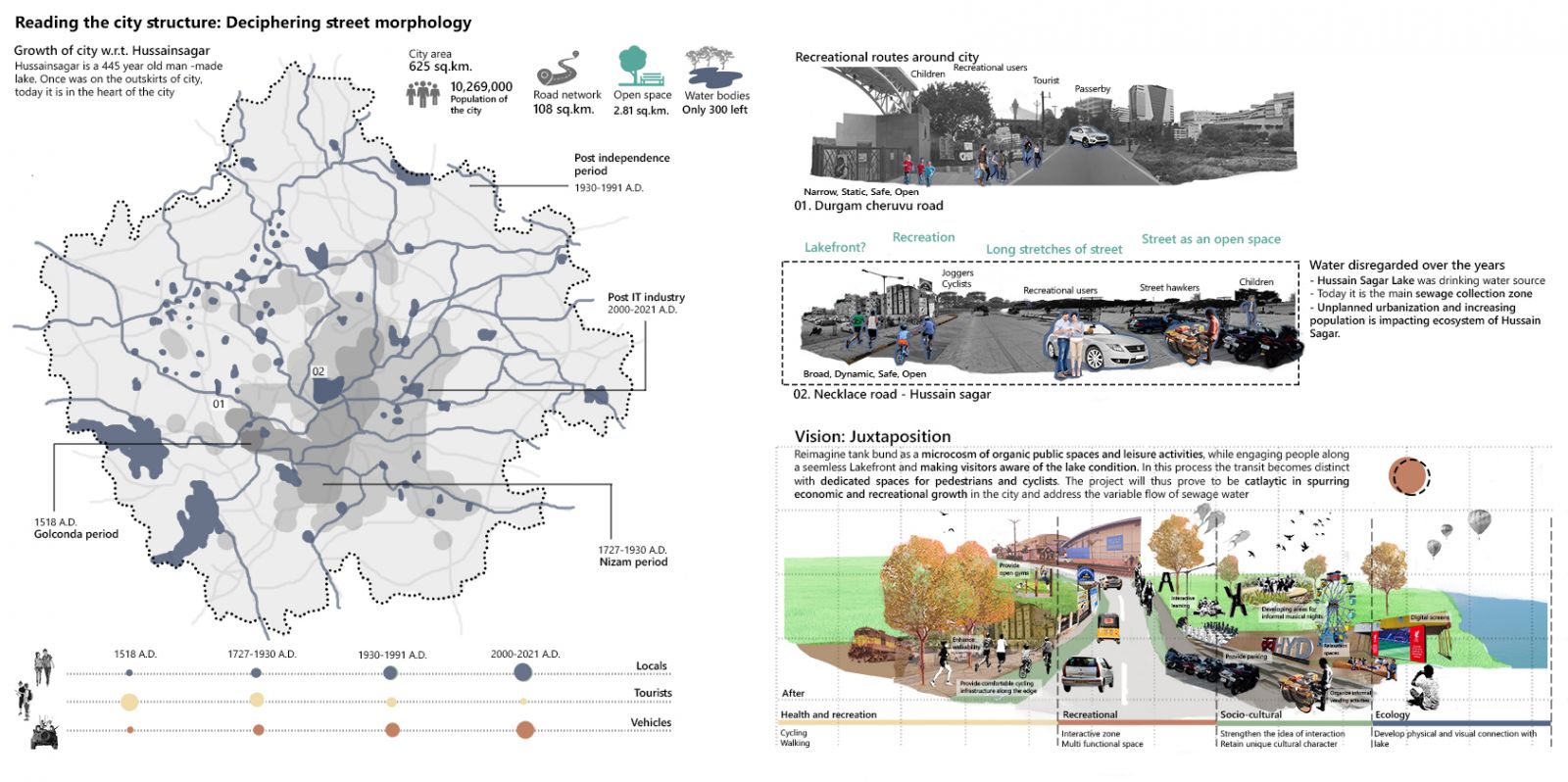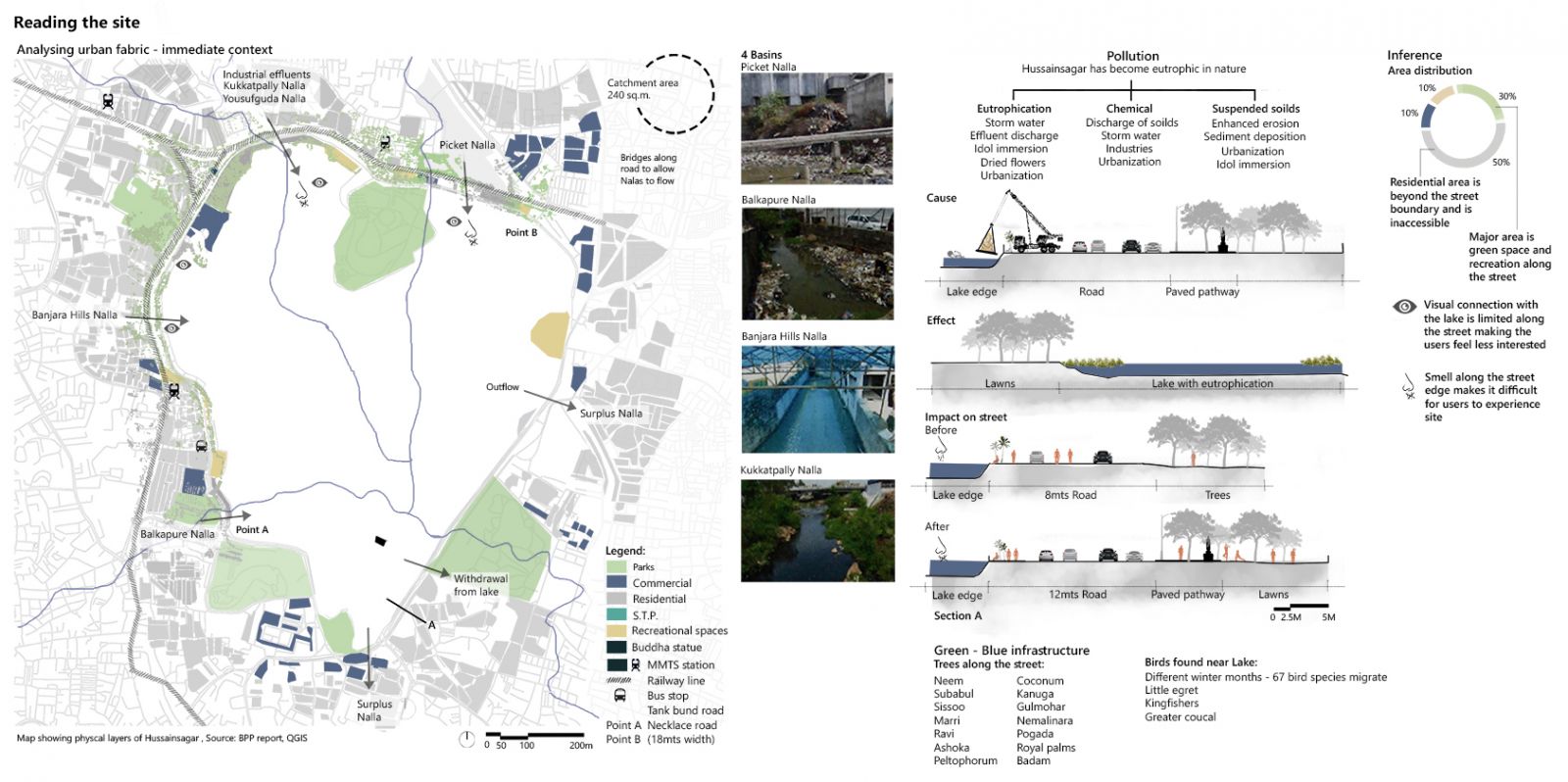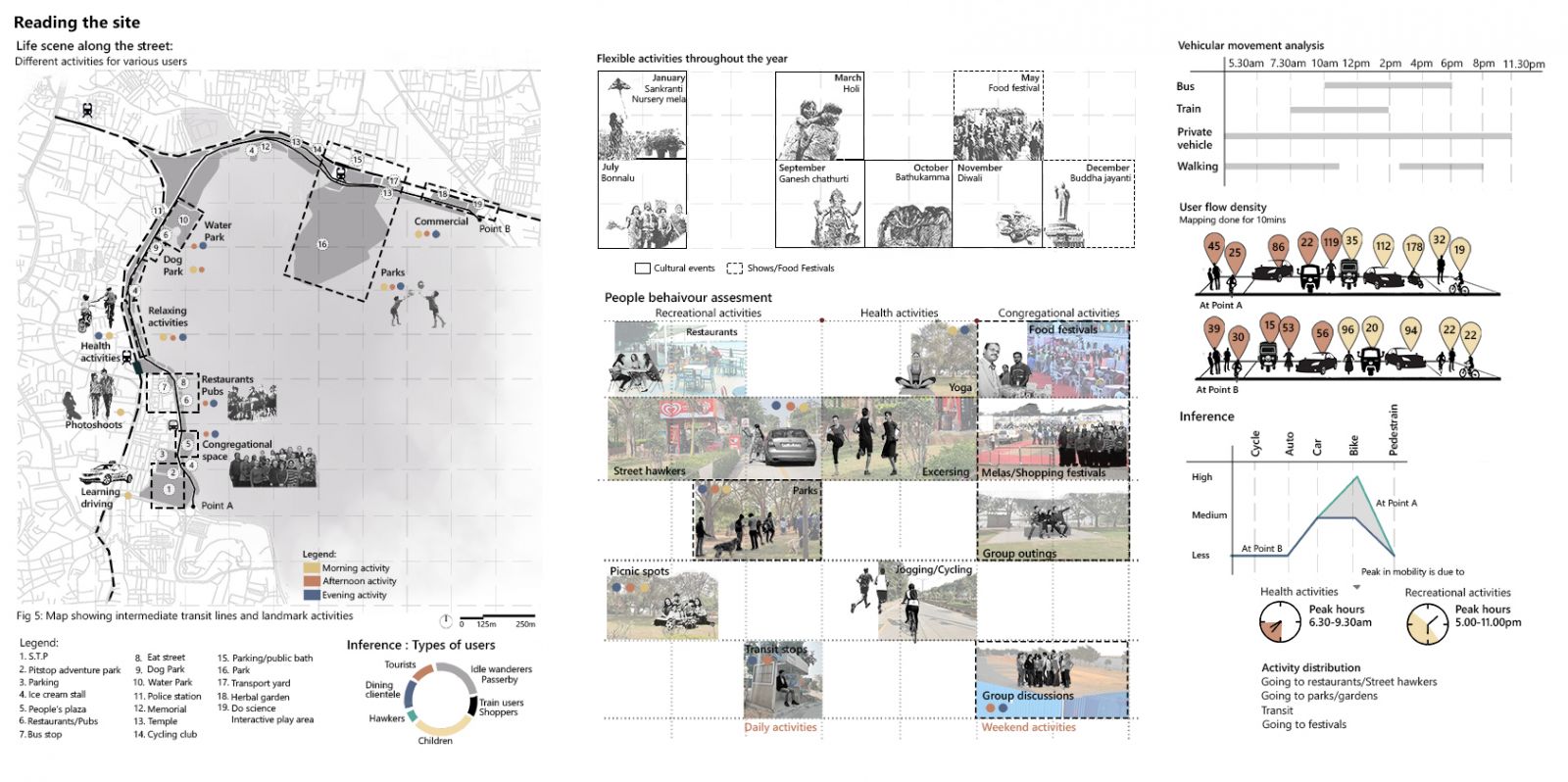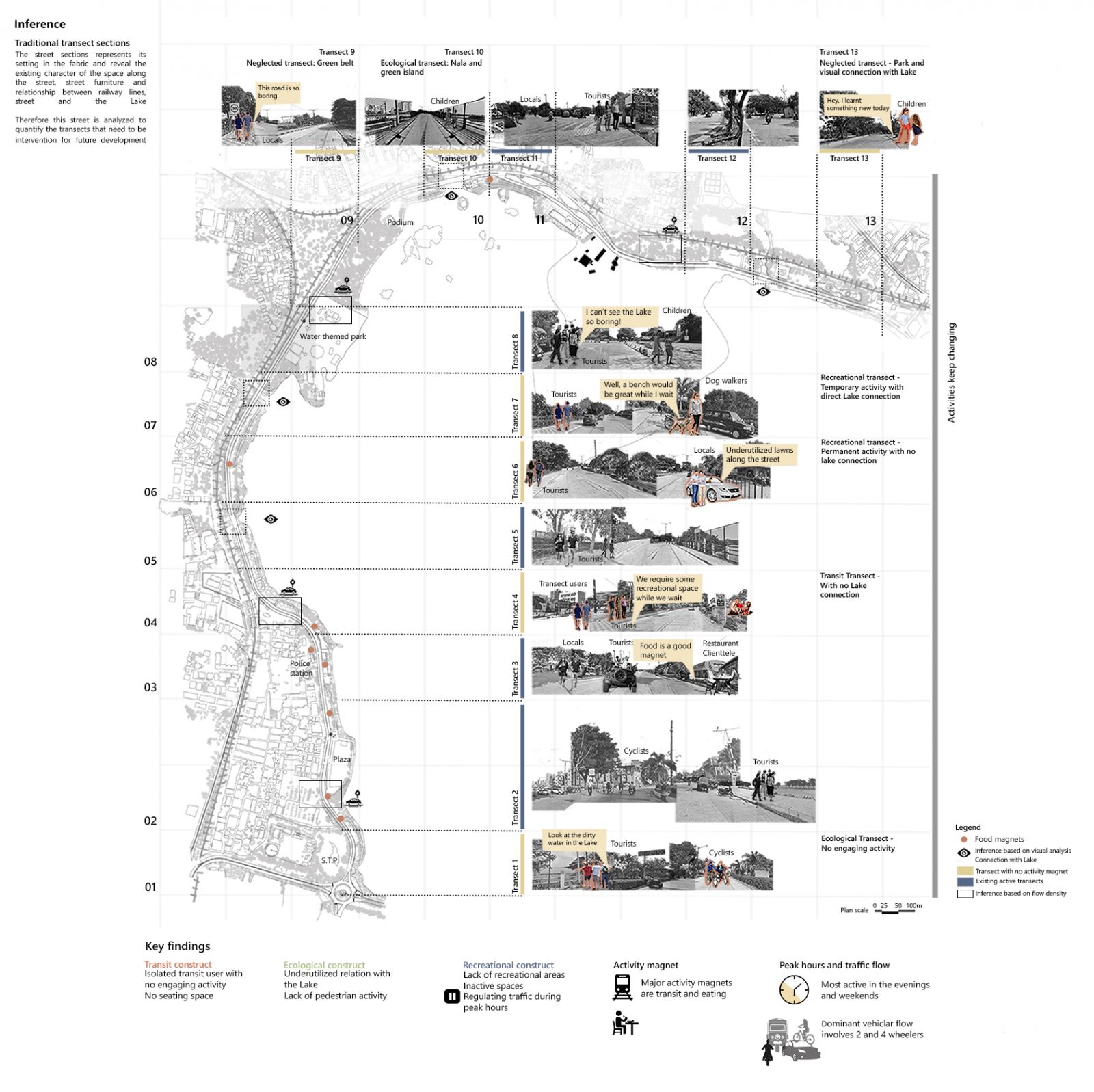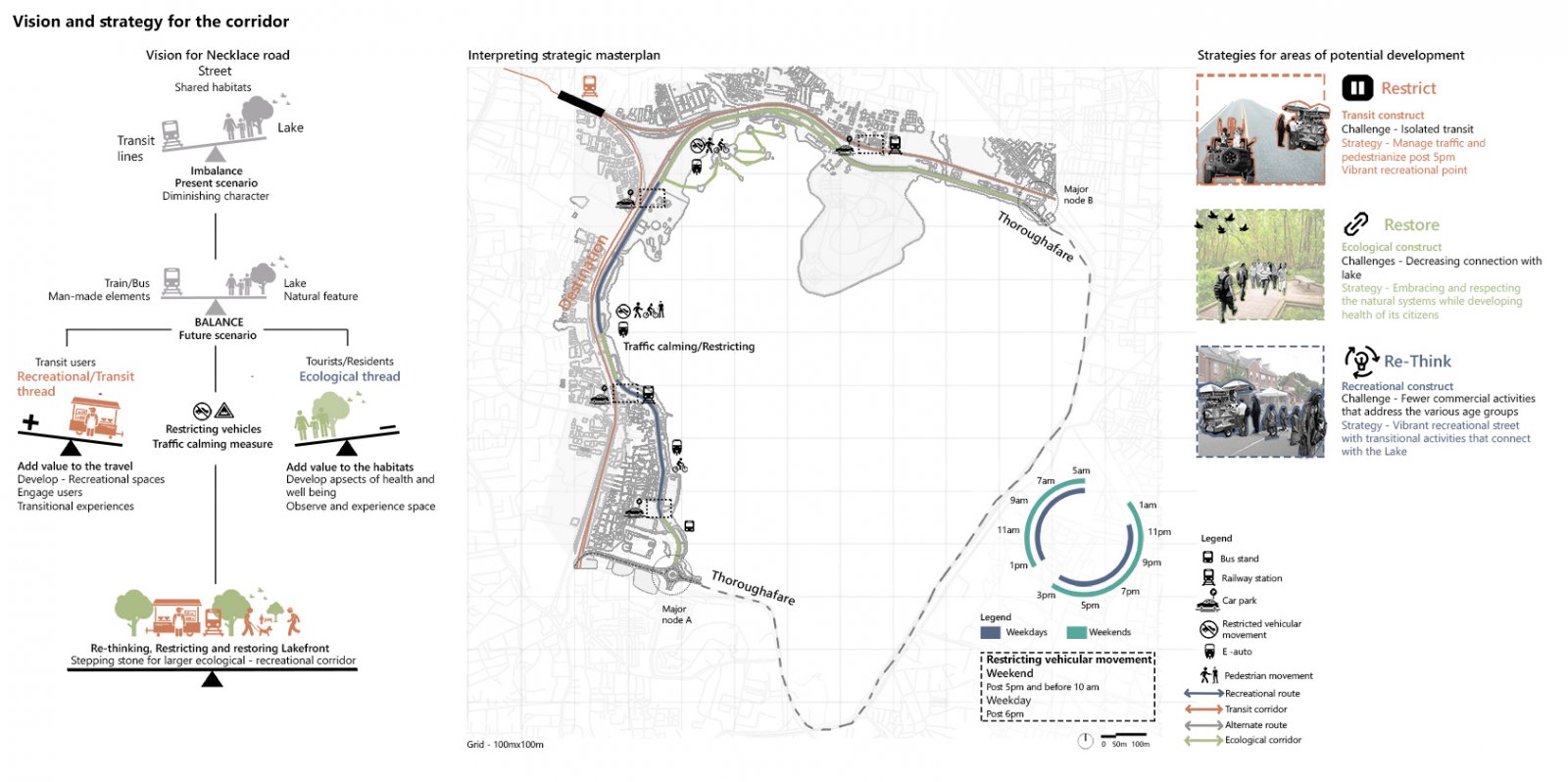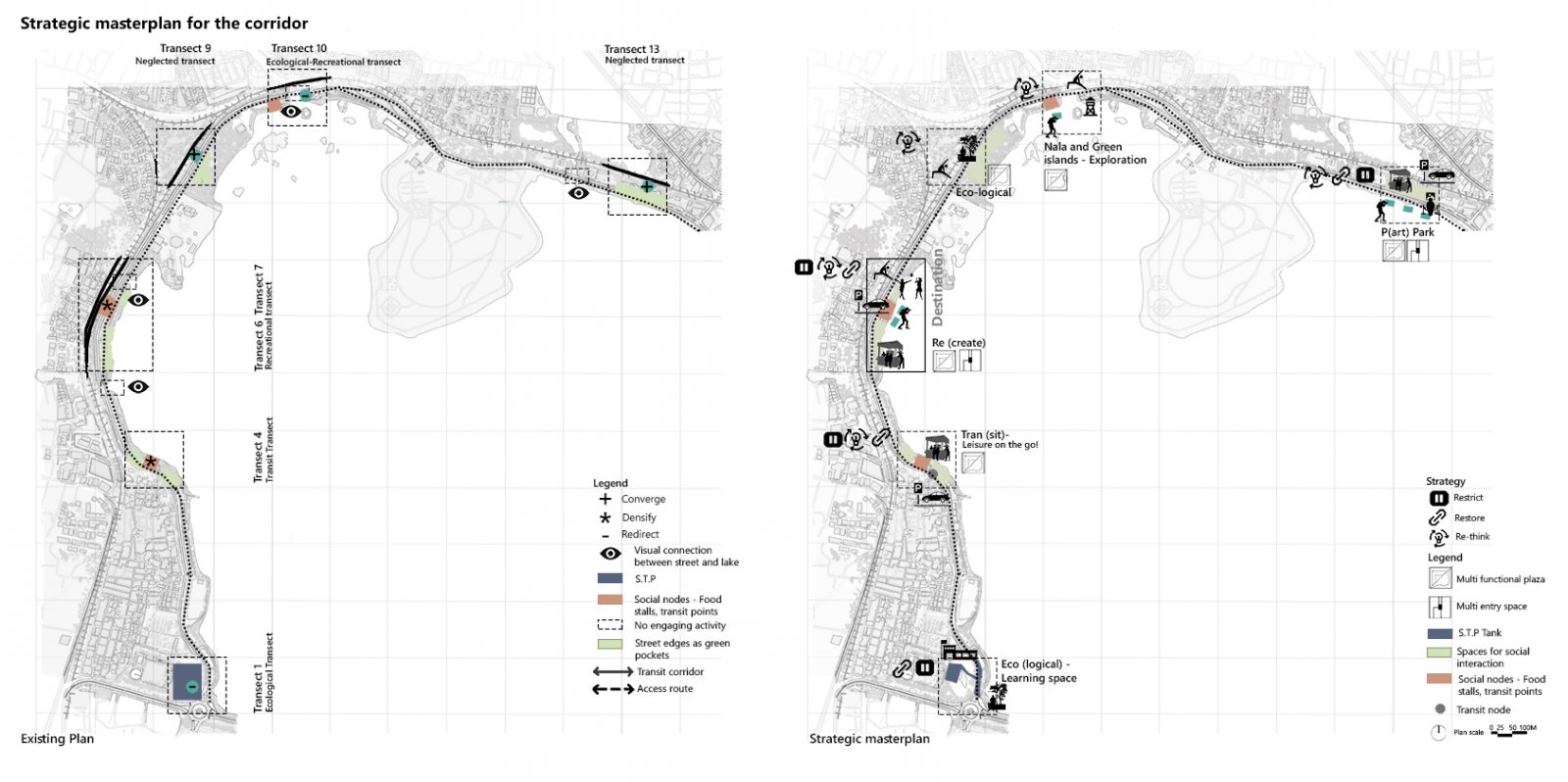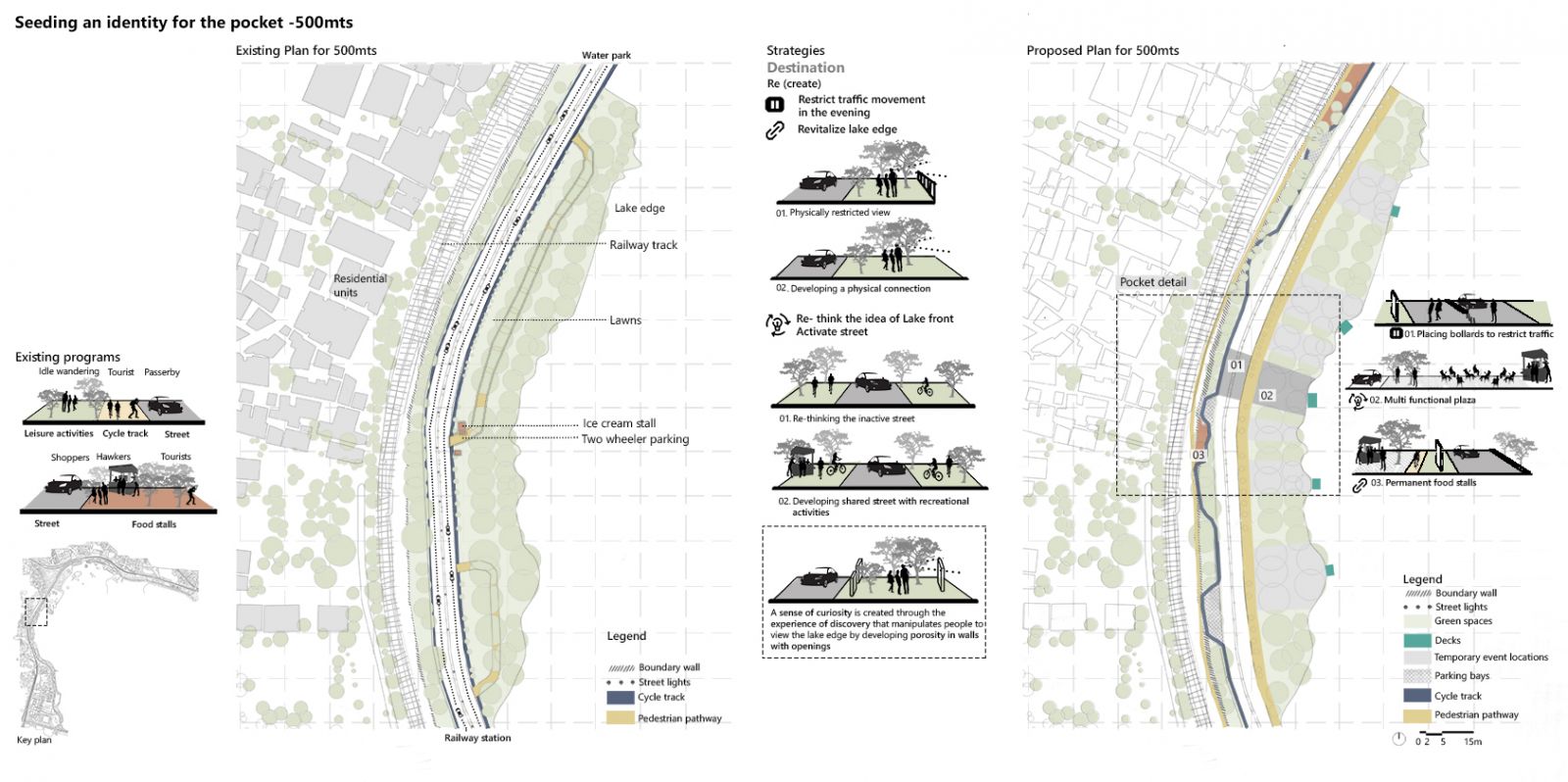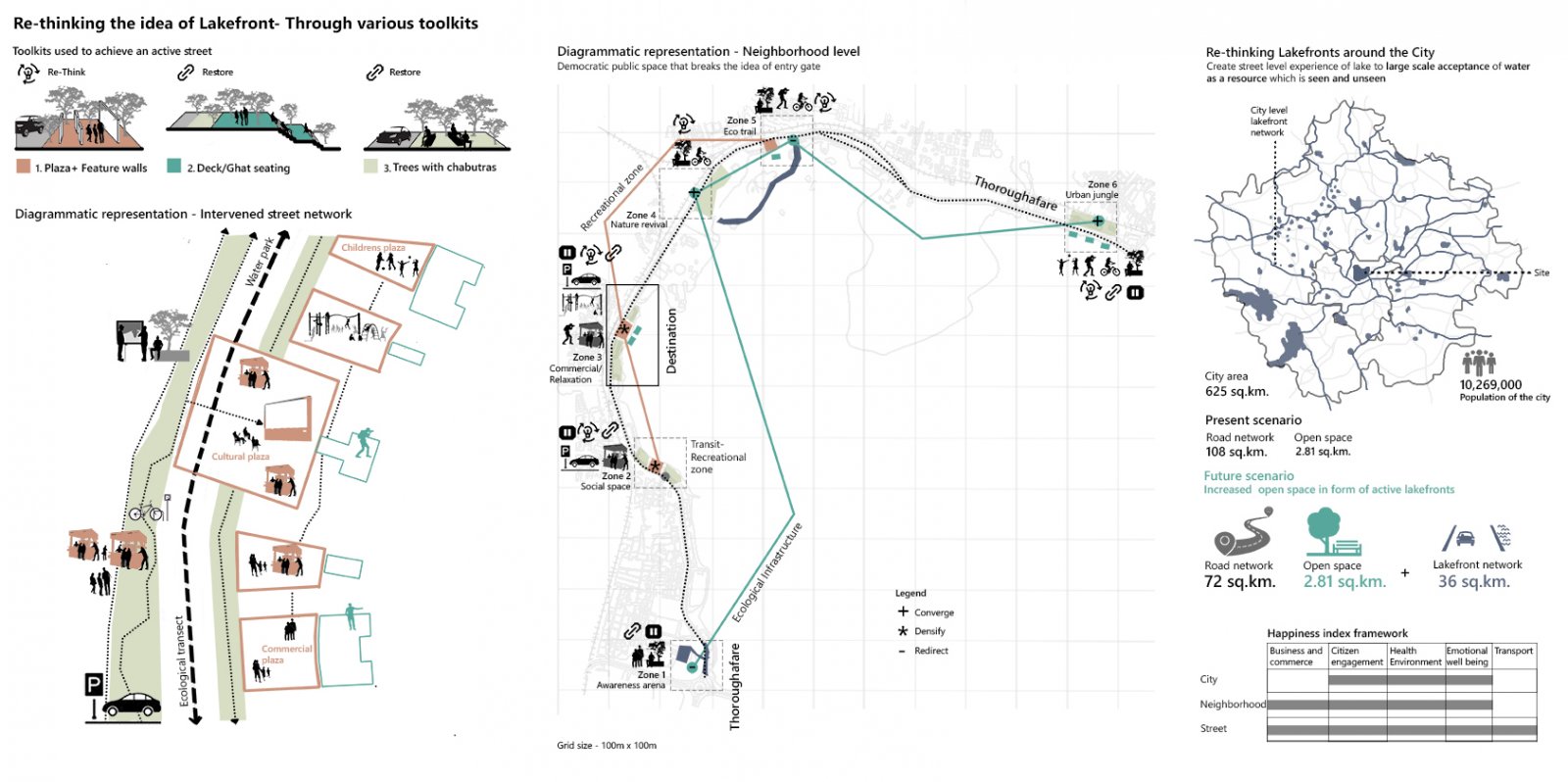Your browser is out-of-date!
For a richer surfing experience on our website, please update your browser. Update my browser now!
For a richer surfing experience on our website, please update your browser. Update my browser now!
As a result of unplanned urbanization and population growth, the entire ecosystem around Hussain Sagar Lake has changed, making it a main sewage collection point in the city of Hyderabad. Though there are various recreational facilities along the Lake, they fail to engage users due to the lack of relationship between the street and the Lake. Hence, a street along Hussain Sagar was chosen for intervention to improve this condition. The street post-development of organized activities and programs has the potential to become a ‘Treasured Necklace’ that can be experienced by the locals and tourists throughout the day making it a destination in the city of Hyderabad.
View Additional Work